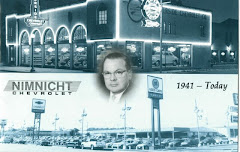Many of us treat our pets like family. The idea of being
separated from our four-legged children for more than a few hours is not an option
for some. The next time you head out to run errands, take a trip, or just go
for a leisure ride with your dog, keep the following safety tips in mind:
·
Never
allow a dog to sit in the lap of the vehicle driver. In the event that your
airbag deploys, the impact could seriously injury your dog, or worse.
·
Never
allow a dog to hang outside the window. While dogs seem to enjoy this, it
puts them in an unsafe situation. Roadside debris, rocks, and bugs have the
potential to fly up and hit your dog in the face. Also, your dog could be sent
flying out of your car if you hit a bump or pothole.
·
Bring a
chew toy. Some dogs get sick during car rides. If a situation arises where
you must bring your furry companion along, bring a chew toy to keep the dog
distracted. It will help time go by quicker for the dog as well.
·
Never
allow a dog to sit in a truck bed. Unless you are securing your dog in a
special crate that is securely tied down, the bed of a truck is one of the most
dangerous places for a dog to be. An auto accident or the dog’s own free will
can send him tumbling out of the truck, causing injury.
·
Pack
fresh water and food for your dog. Dogs normally get excited about car
rides and pant heavily as a result. The panting makes them thirsty. Having
fresh water available will help calm the dog down and make for a more
comfortable ride for him.
·
Use a
safety harness (like the one in the photo above, photo courtesy of
radiousa.com). If you are going to properly secure your dog in your vehicle,
use a dog safety harness rather than a regular neck collar. Using a collar as a
way to restrain your dog in the car has the possibility to cause strangulation.
Keep these tips in mind the next
time you take your dog for a car ride. Doing so can create a less stressful and
more comfortable ride for the both of you.





 If you own a Saturn vehicle and you are unsure where you can take your car for a Factory Warranty and Repair, then here's a tip. Take your
If you own a Saturn vehicle and you are unsure where you can take your car for a Factory Warranty and Repair, then here's a tip. Take your 